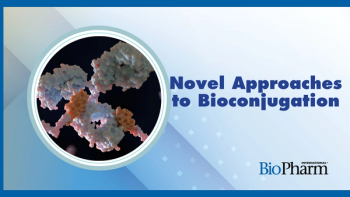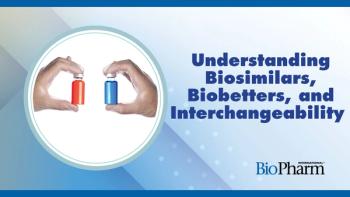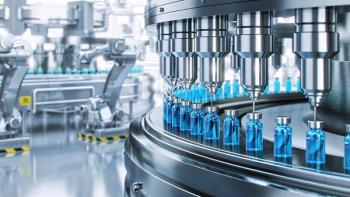
How Tightly Should Stem-Cell Therapies Be Regulated by FDA?
Language surrounding regenerative medicine and the REGROW Act appeared back into the 21st Century Cures Act right before it passed. What will this mean for the controversial testing and marketing of stem-cell therapies?
Medi-Post, a Korean-based biopharmaceutical company, announced on Jan. 10, 2017 that it has secured a patent from the United States Patent and Trademark Office protecting a method for culturing mesenchymal stem cells. The patent itself was issued on Nov. 22, 2016 and focuses on the treatment of lung disease in newborn or premature babies via cells proliferated from umbilical cord blood. The patent is being used to develop a therapy called Pneumostem, which was granted an Orphan Drug designation in 2013 by FDA (1). The patent is co-owned by Samsung Life Public Welfare Foundation and is already issued in Canada. The underlying belief about stem-cell treatments is that precursor cells will differentiate into the tissue of interest (in this case, new lung tissue) and will help heal patients through use of autologous cells.
Despite the advances in the field of regenerative therapies, there are some regulatory sensitivities that plague the industry. Direct-to-consumer stem cell therapy clinics are increasingly popping up, and FDA is tasked to monitor each processing or “manufacturing” site in a piecemeal fashion. In the beginning of 2016, FDA issued a
Shutting these types of clinics down one by one may prove to be a daunting task for the agency. According to an August 2016 article in
Support for stem-cell therapies
Development of Medi-Post’s Pnemostem is backed by the Translational Stem Cell & Regenerative Medicine Consortium Grant as a part of Public Health and Medicinal Technology R&D Project funded by the Ministry of Health and Welfare of Korea and the Korea Health Industry Development Institute. In Japan, conditional approval for stem-cell treatments is granted by the Pharmaceuticals and Medical Devices Agency after Phase II trials if the investigative agent is deemed effective for a very small number of subjects-in other words, companies can be exempt in some cases from conducting Phase III trials. This is alarming, considering that a recent analysis found that 70% of drugs
The Medi-Post product is one of many stem-cell therapies under clinical investigation, and the science behind the use of these therapies is promising. Investigators have shown that multipotency of these types of cells remains after amplification and the stem cells that are extracted are capable of turning into various types of tissue. As Medi-Post says in its patent application, “Methodologically, the umbilical cord blood extracted from the real placental tissue is an ideal source for autologous and allogeneic stem cells, and such stem cells obtained thereby can be used directly or after amplifying stage whenever and as many as required” (5).
Support for investigative cell-therapy products in the US, however, is a little more convoluted. Although many scientists see the value of the research, they think the therapies should be held to rigorous efficacy and safety standards. FDA issued a
A piece of legislation introduced in March 2016 seeking to lower standards for the approval of cell-therapy products, the REGROW (Reliable and Effective Growth for Regenerative Health Options that Improve Wellness) Act, is opposed by prominent industry groups such as the International Society for Stem Cell Research, the International Society for Cellular Therapy, and the Alliance for Regenerative Medicine. It seeks to allow marketing of a conditionally approved cellular therapy prior to the approval by FDA. Language from the REGROW Act snuck back into the final text of the 21st Century Cures Act prior to its final passage (7).
References
1. Medi-Post, “Medipost receives US Patent for ‘PNEUMOSTEM’ for Treating Lung Disease, Medi-Post.com,
2. R. Hernandez, “Stem Cell Treatment Centers Receive FDA Warning for Not Following cGMP Procedures,” BioPharmInternational.com, www.biopharminternational.com/stem-cell-treatment-centers-receive-fda-warning-not-following-cgmp-procedures, accessed Jan. 10, 2016.
3. L. Turner and P. Knoepfler, Cell Stem Cell 19 (2), pp. 154–157 (Aug. 4, 2016).
4. R. Hernandez, “Clinical Development Success Rates Examined in New BIO Report,” BioPharmInternational.com, www.biopharminternational.com/clinical-development-success-rates-examined-new-bio-report, accessed Jan. 10, 2016.
5. Y.S. Chang, W.S. Park, and Y.S. Yang, "Method of treating lung diseases using cells separated or proliferated from umbilical cord blood," US patent PCT/KR2007/000535, Nov. 2015.
6. FDA, "FDA Warns About Stem Cell Claims," FDA.gov, www.fda.gov/ForConsumers/ConsumerUpdates/ucm286155.htm, accessed Jan. 10, 2016.
7. K. Servick, “Under 21st Century Cures legislation, stem cell advocates expect regulatory shortcuts,” Sciencemag.org,
Newsletter
Stay at the forefront of biopharmaceutical innovation—subscribe to BioPharm International for expert insights on drug development, manufacturing, compliance, and more.




